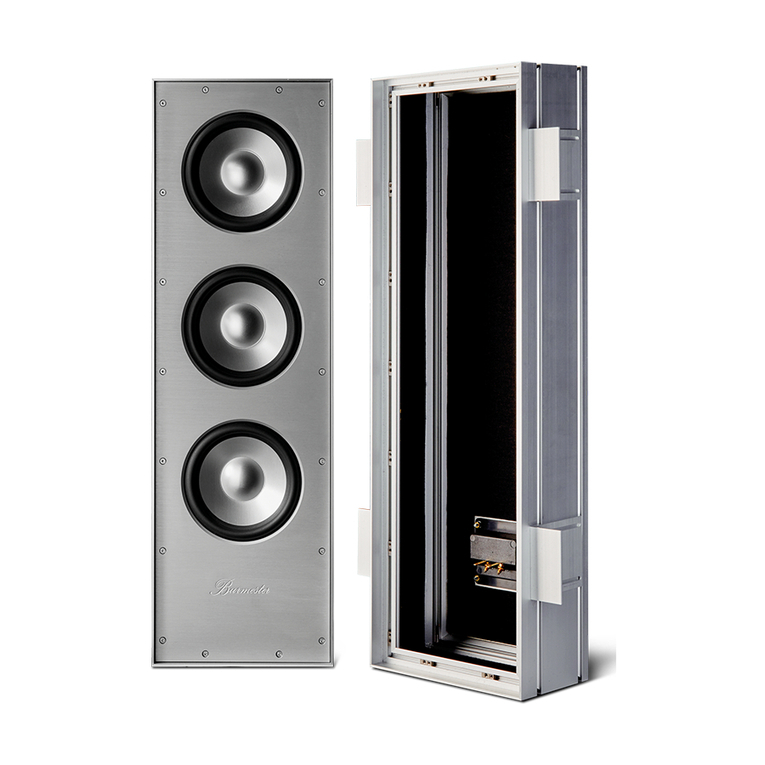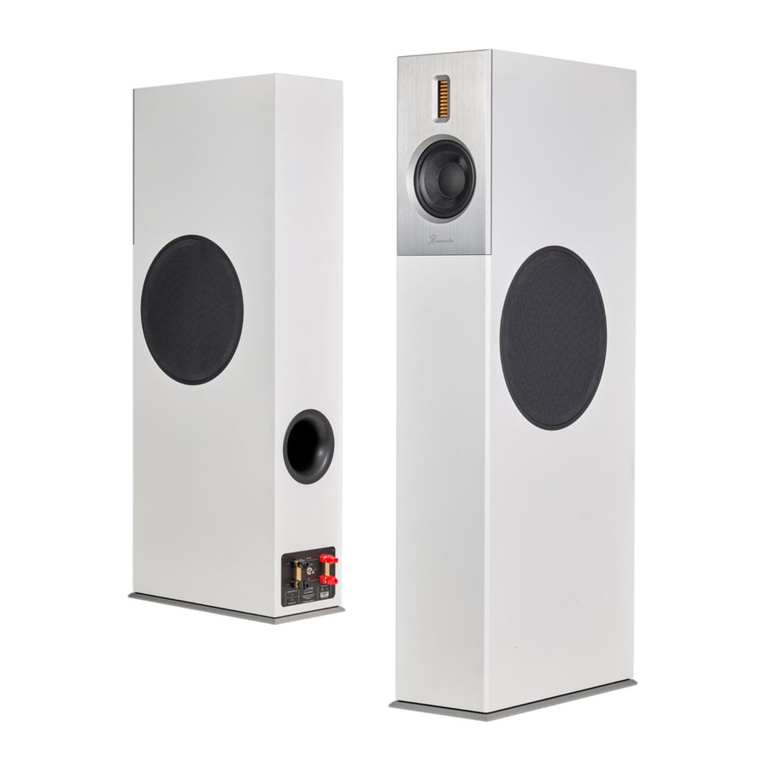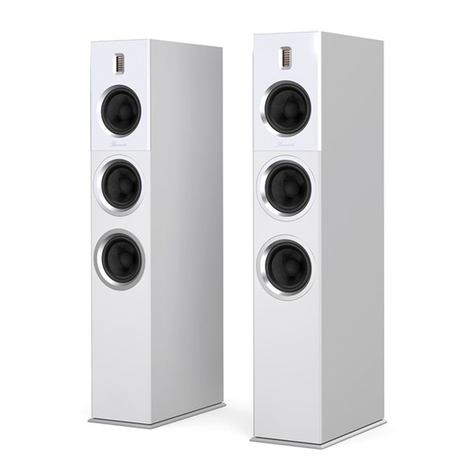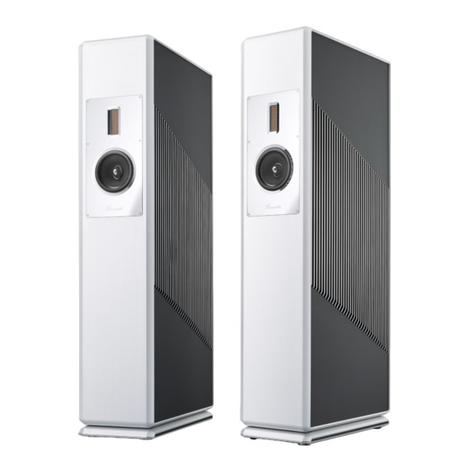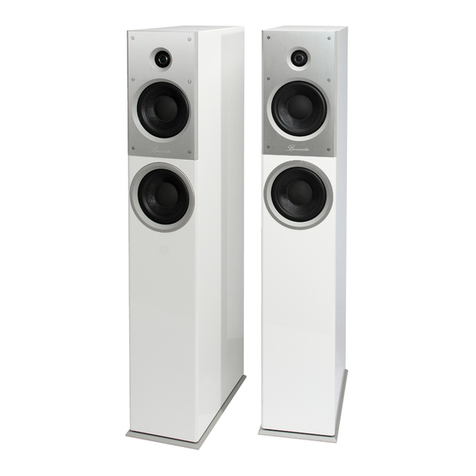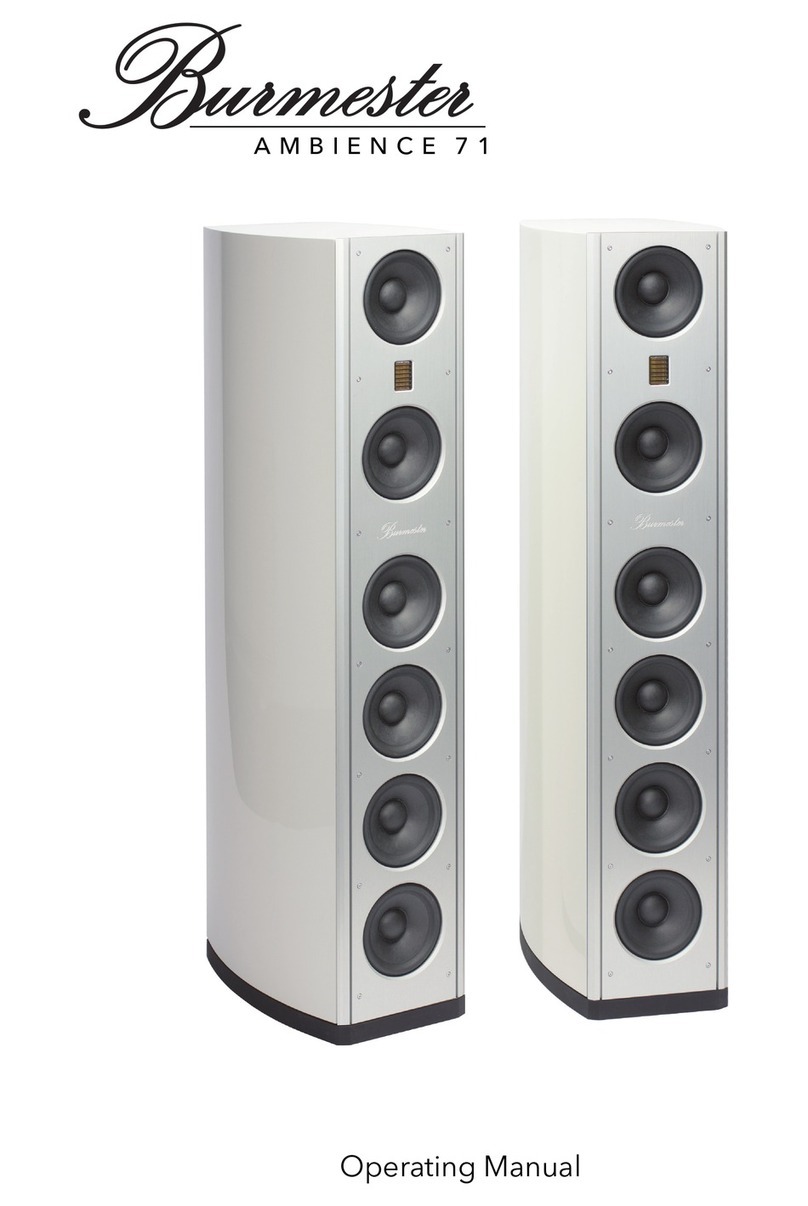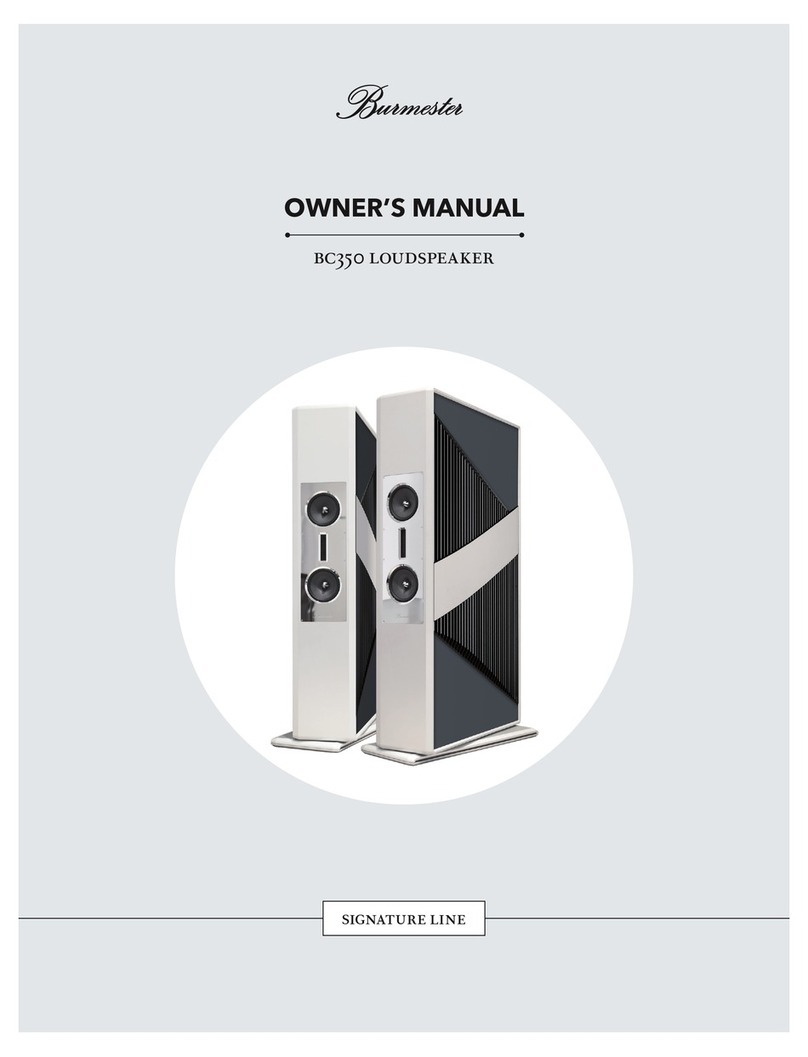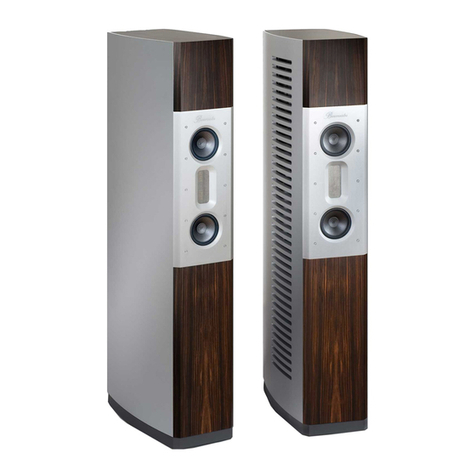
A BRIEF OVERVIEW
4
A O
The B18 loudspeaker has been developed as a 2½-way bass reflex speaker with a front-
firing design and is a universal sound talent: space-saving, yet at the same time
extremely musical and dynamically thrilling.
The high-frequency reproduction benefits from the ring radiator which is custom-made
for Burmester and guarantees optimum clarity and resolution. The low-mid and
mid-low drivers are a derivative on the basis of the proven chassis which has already
earned the B10 compact speaker an impressive sound performance.
The highly complex frequency crossover sits in an isolated enclosure chamber, just like
the low-mid driver whose own sealed compartment yields an outstandingly clean mid-
frequency performance. A fully re-designed, computerized spring-mass damping
system ensures an optimum decoupling of the speaker and thus makes it extremely
resistant to floor vibrations.
Supported by the cabinet, which has been optimized using FEM analysis, the massive
and particularly torsion-resistant aluminum-MDF sandwich front delivers an accurate,
precise bass and reduces cabinet resonances significantly.
Apart from a mechanical damping through a foam cylinder, the B18 loudspeaker has a
bass switch to tweak the bass intensity to the ambient room conditions and your
personal listening taste.
Highlights:
• Exclusive Burmester ring radiator for optimized transparency and resolution
• Advanced low-mid and mid-low driver based on the B10 compact speaker
• Several options of room adjustment using the rearward bass switch in combination
with the plastic foam cylinder
• Accurate, precise bass and significantly reduced cabinet resonances due to the
massive and particularly torsion-resistant aluminum-MDF sandwich front in
combination with the cabinet, which has been optimized using FEM analysis
• 2½-way bass reflex speaker with an isolated enclosure chamber for the mid-low
driver and an own sealed compartment for the low-mid-driver
• Re-designed, computerized spring-mass damping system decouples the speaker
from the ground
• Highly complex frequency crossover in an isolated enclosure chamber
Dear Music Enthusiast,
Congratulations on your selection and thank you for your trust.
You have chosen a product that combines absolute fidelity and uncompromising
quality with technical innovation and maximum flexibility.
Please read through these operating instructions at least once before initially installing
the product so you can fully benefit from all the functions of this truly high-fidelity
device. Should any of your questions remain unanswered, please contact your
specialist dealer or us directly.
Talk to us about any special requests you may have – even if they seem exceptional.
We love accepting technically feasible challenges.
We wish you many hours of high-fidelity listening.
The Burmester Team
